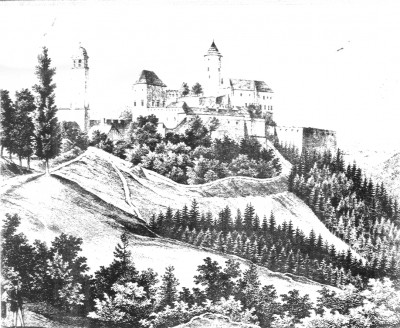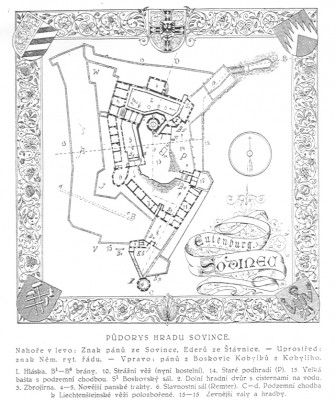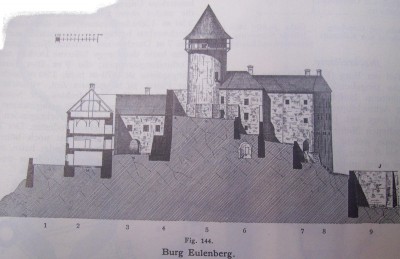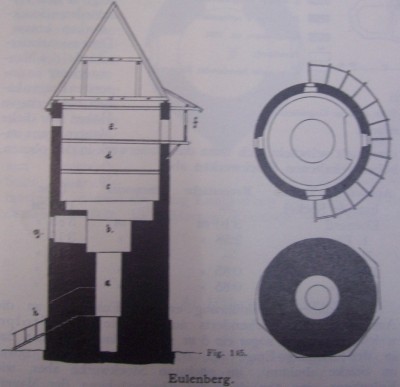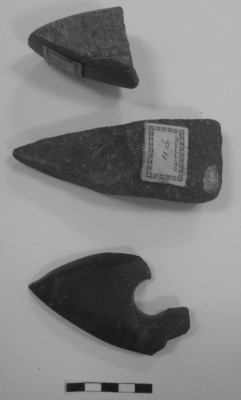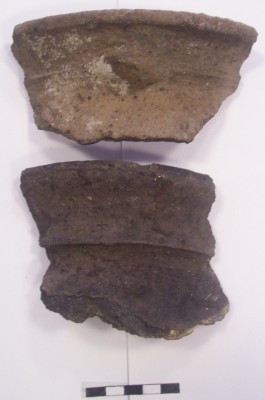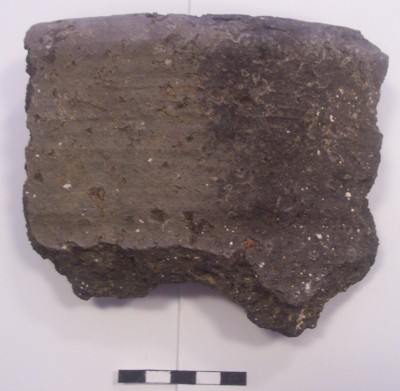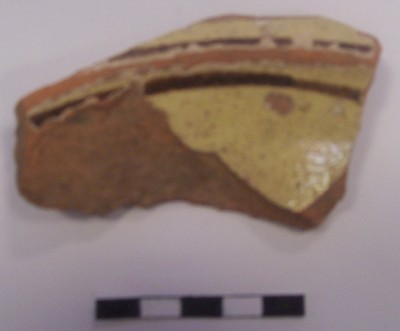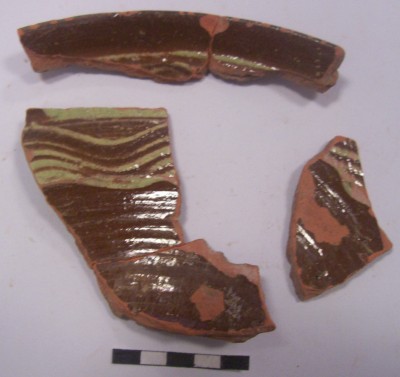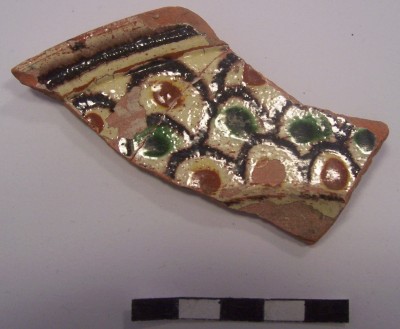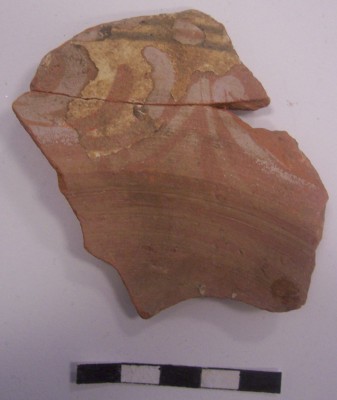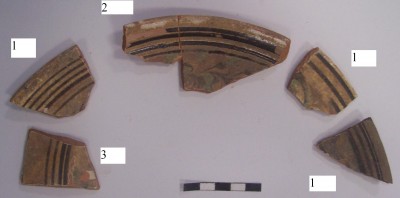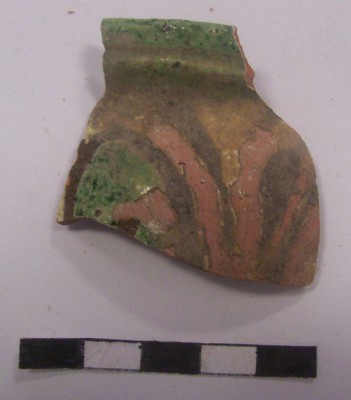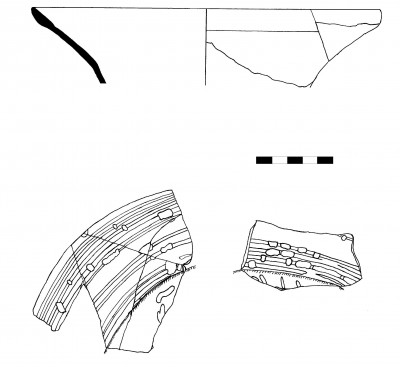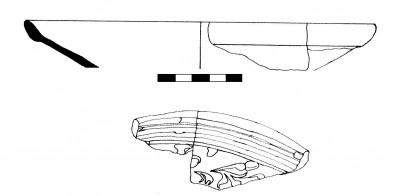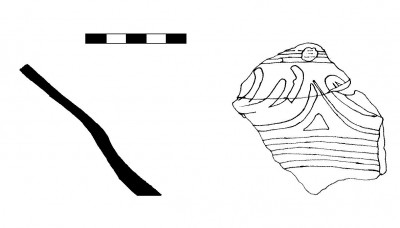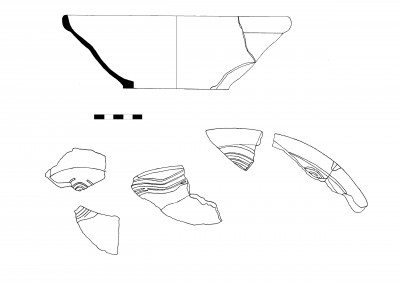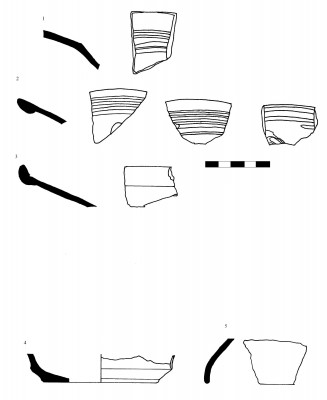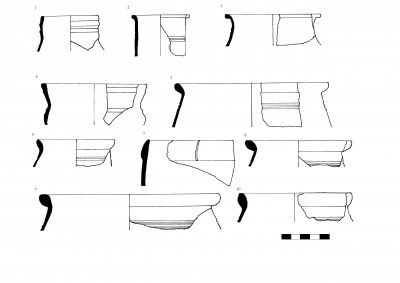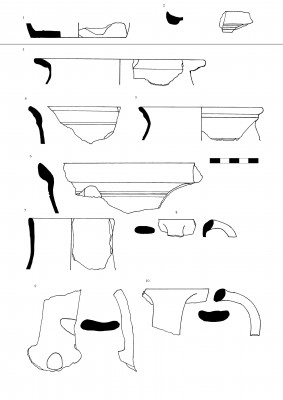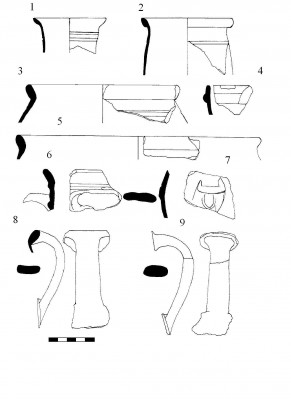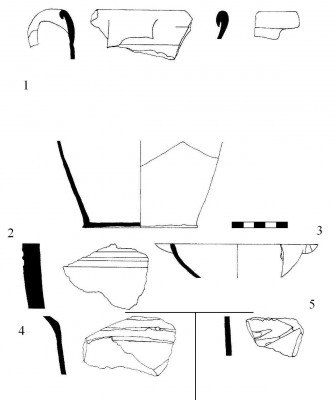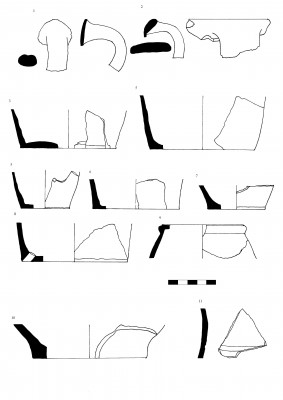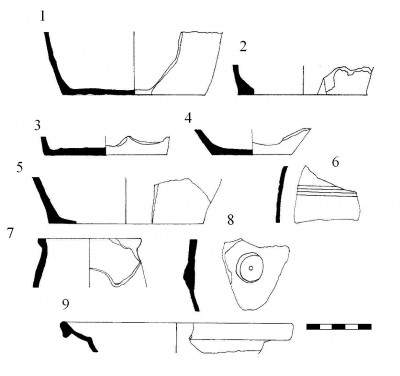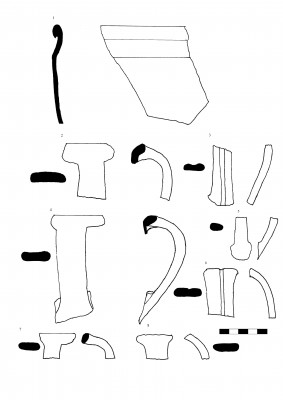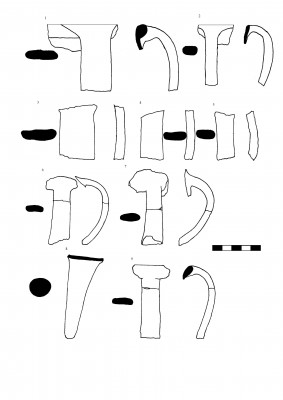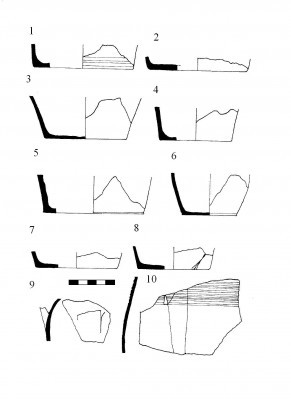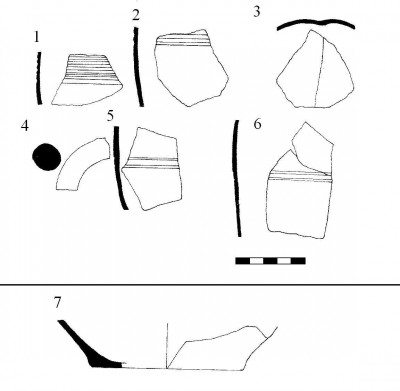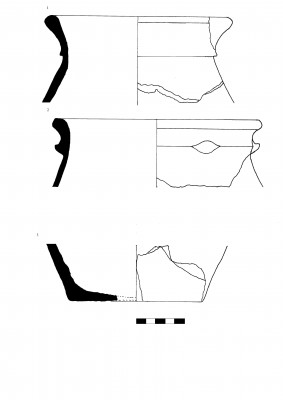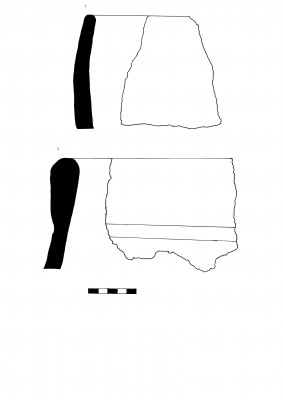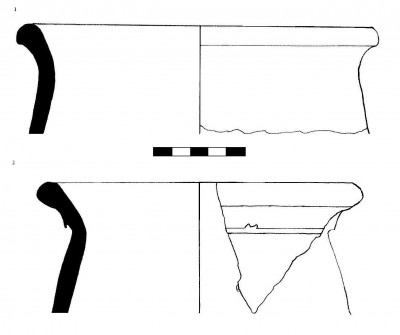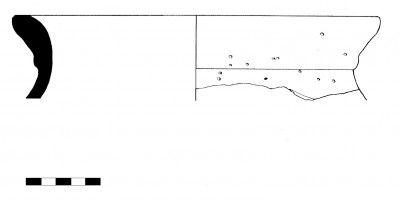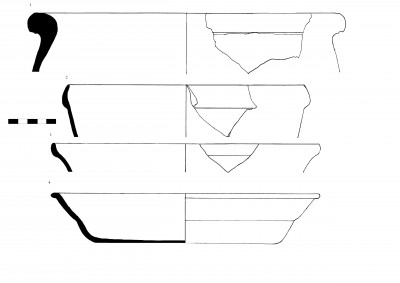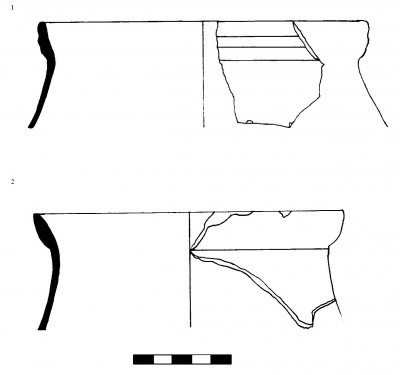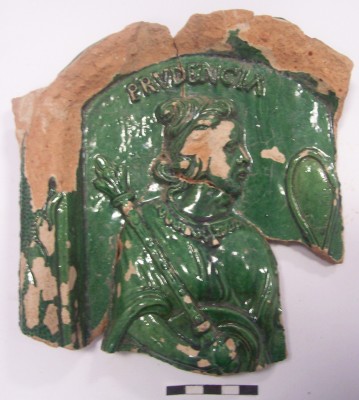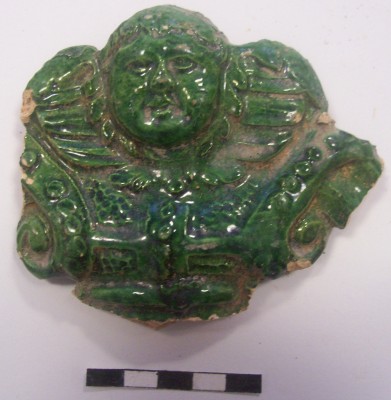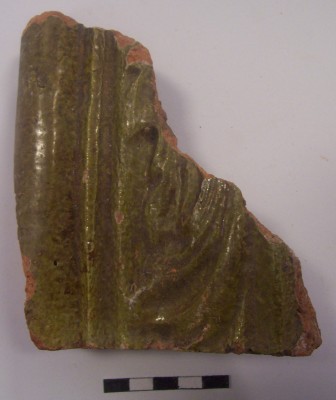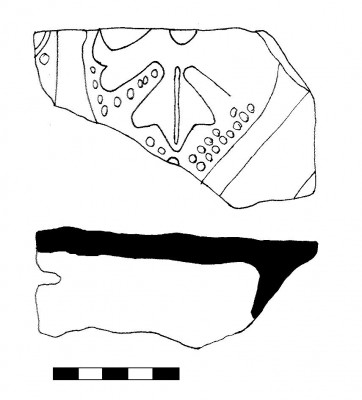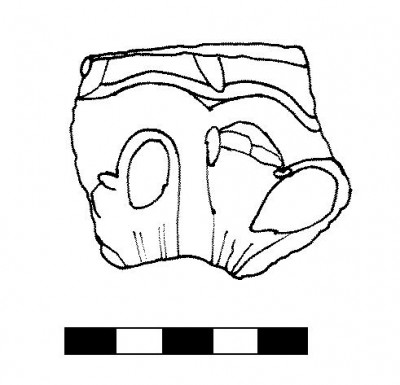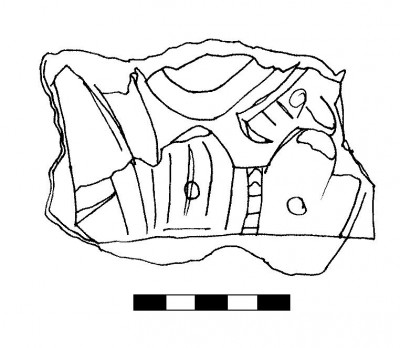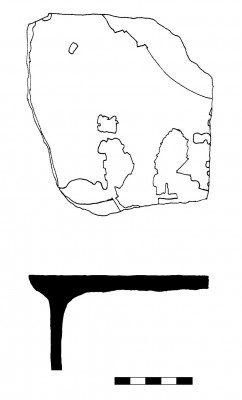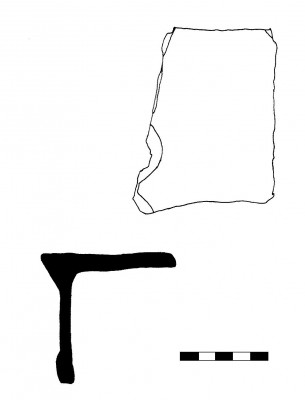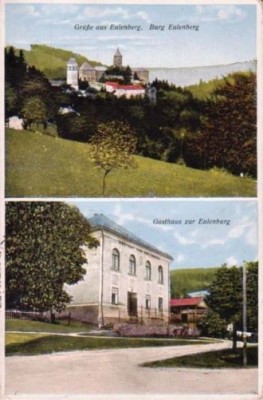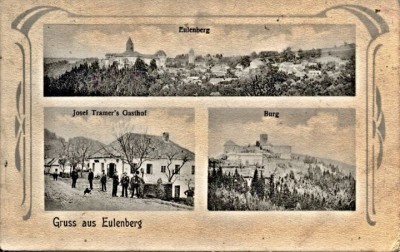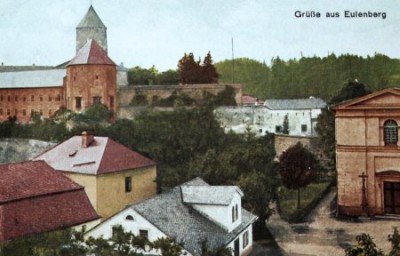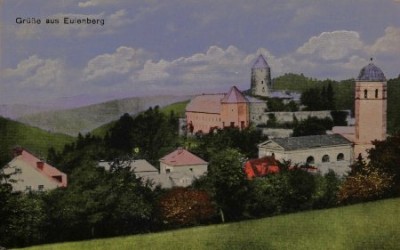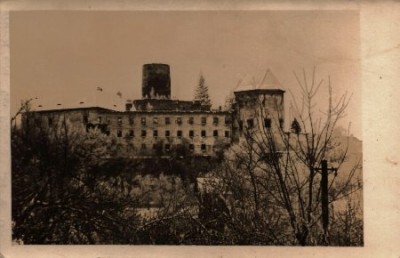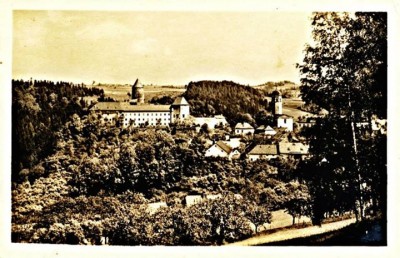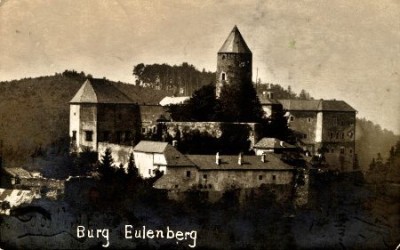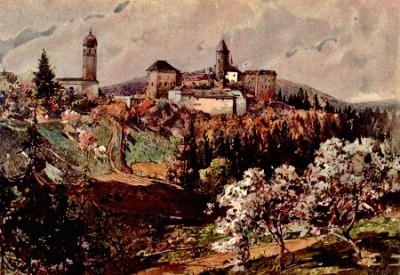| Název: Name: | Sovinec | Sovinec |
| Další názvy: Other Names: | Sowinec, Eulenburg | |
| Typ: Style: | hrad | castle |
| Stav: Condition: | dobrý, opravován | good, repaired |
| Přístupnost: Accessibility: | placený vstup | pay entry |
| Obec: Municipality: | Jiříkov - Sovinec | Jiříkov - Sovinec |
| GPS souřadnice: GPS Coordinates: | - | |
| První písemná zmínka: First Written Reference : | DD.MM.1348 | |
| Památky a muzea v okolí: Places of Interest and Museums in the Vicinity: | - | - |
| Poznámka: Note: | - | - |
| Zdroje: Sources: | http://www.hrady.cz/index.php?OID=288 http://www.hrady.cz/wnd_show_text.php?tid=26500 http://akce.sovinec.cz/ | |
| Tištěné zdroje: Printed sources: | DAVID, P. – SOUKUP, V. 2002: Sovinec. In: 888 hradů, zámků, tvrzí České Republiky. s. 264. HORNIŠER, I. – ČAPKA, V 2008: Neznámá erbovní galerie Řádu německých rytířů na hradě Sovinci. In: SBM. Bruntál. 3-12. HOSÁK, L. 2004 : Panství Sovincké. In: Historický místopis země Moravskoslezské. 601-605. Praha. KOHOUTEK, J. 1991: Nálezová zpráva 1991 – Hrad Sovinec. KOHOUTEK, J. 1993a: První etapa výzkumu v areálu hradu Sovince (okr. Bruntál). PV 1991. 90-91. Brno. KOHOUTEK, J. 1993b: První etapa archeologického výzkumu hradu Sovince. ČSlM Série B, 42, 1-12. KOHOUTEK, J. 1994: Nálezová zpráva 1994 – Hrad Sovinec. KOHOUTEK, J. 1997a: Druhá etapa archeologického výzkumu hradu Sovince. ČSlM Série B, 46, 12-25. KOHOUTEK, J. 1997b : Sovinec (okr. Bruntál). PV 1993 – 1994. 236. Brno. MENOUŠKOVÁ, D. – MĚŘÍNSKÝ, Z. (edts) 2008: Krása, která hřeje, Výběrový katalog gotických a renesančních kachlů Moravy a Slezska. Uherské Hradiště. MUSIL, F. 1998: K vývoji šlechtických sídel na Šumperku a Bruntálsku – (1. část). In: Stř. M. 7. 26-37. MUSIL, F. 1999: K vývoji šlechtických sídel na Šumperku a Bruntálsku – (2. část). In: Stř. M. 8. 17-30. MÜLLER, K. 2001: Erbovní galerie Řádu německých rytířů ve Slezsku a na severní Moravě I. (17. století). In: SBM. Bruntál. 25-35. PAPAJÍK, D. 2005: Páni ze Sovince. Dějiny rodu moravských sudích. Jihlava. PINKAVA, V. 1922: Uničovský a rýmařovský okres. Vlastivěda Moravská, Brno. PINKAVA, V. 1924: Hrady a zámky župy Olomoucké 3. Hrad Sovinec. VSMŽO 2/1923-24, 86-88 a 106-107. PLAČEK, M. 2001: Sovinec. In: Ilustrovaná encyklopedie moravských hradu hrádků a tvrzí. 577-582. Praha. PLAČEK, M. 1999ii: Hrad Sovinec. In: Od gotiky … III., 1999, 226-227. Olomouc. PROKOP, A. 1904: Die Markgrafschaft Mähren in kunstgeschichtlicher beziehung. Band I-IV. Wien. 98-100, 550-553, 781-787. SAMEK, B. 1999: Umělecké památky Moravy a Slezska 2 [J/N]. Praha. SPURNÝ, F. 1964: Sovinec. Ostrava. SPURNÝ, F. (ed.). 1983: Sovinec – hrad. In: Hrady, zámky a tvrze v Čechách, na Moravě a ve Slezsku II - Severní Morava. s. 215-220. TOUŠLOVÁ, I. – PODHORSKÝ, M. – MARŠÁL, J. Sovinec. In: Toulavá kamera 6. s. 108-109. TYMONOVÁ, M. 1996: Záchranný archeologický výzkum TYMONOVÁ, M. 1996: Nález dvou koster na hradě Sovinci (okr. Bruntál). Stř. M 2. 98-100. ULLRICH, J. 1923: Die Eulenburg. DMH 9, 244-257. VOJKOVSKÝ, R. 2008 : Sovinec. Hrad jižně od Rýmařova. 17. svazek vlastivědných průvodců. Dobrá. UNGER, J. 2002 : Pohřební ritus a zacházení s těly zemřelých v českých zemích (s analogiemi i jinde v Evropě) v 1. - 16. století. In: Panoráma biologické a sociokulturní antropologie: Modulové učební texty pro studenty antropologie a „příbuzných“ oborů 9 (ed: MALINA, J.) Autor neznámý. Jiříkov. In: Moravskoslezský kraj : Města a obce Moravskoslezského kraje (tradice, historie, památky, turistika, současnost). s. 233. | |
Sovinec
hrad
Administrative and geographical boundaries
Currently, the castle, together with the municipal parts, properly falls under the village of Jiříkov (3 528 hectares, 297 inhabitants), which consists of six parts – Jíříkov, the Owlery, Křížov, Těchanov, Kněžpole and Valšův Court, in the former district of Bruntál, the region of moravia-silesia (moravian-Silesian region, 233). In the past, especially in the 20. century a number of changes occurred in the administrative jurisdiction.
In the south of the upland of the lower Jeseník mountains, which borders with plain Hornomoravského uval (Dvořák 1994, 2), is hiding to this day in the forest a huge castle Sovinec, so that it is not from the plane of the visible (Pinkava 1924, 14), the more suddenly and monumentally give you receive about yourself to know, in the first moments, when she meets him. As a place for its construction was selected conical vápencovitý rocky headland, north-northwest over the Sovineckým creek, which then drains to the west, at the Long Loučky the stream of its Celebration. Towards the south-southwest from the castle lies near the saddle where it starts most of the year dry gotta tidy the den, which is further directed into the area between a Long Clearing and Damage. This space led the old trail, which the castle guarded and controlled (Dvořák 1994, 1).
In the area between the Pasekou and Jiříkovem, so in places where is also the castle, stands out the north-northeast – south-southwest the ongoing band of limestone svrchnodevonského old age, on the northwest accompanied by rearrangement. Here are the limestone sharply pushed on to the rocks andělskohorského formations. In the overburden of gray recrystallized limestone, the outcropping of gray fine to coarse-grained sandy limestone and mostly strongly calcareous quartz sandstone. Calcareous sandstone and breccia belong to the formation moravskoberounskému and are probably svrchnofrasnského old age. They pass gradually from the bed of limestone to the overlying andělskohorského formations. The whole limestone and sandstone structure, with a general leaning to the east – southeast, osně taps to severoseverovýchodu, it gradually narrows and finally disappears in little george under the sediments andělskohorského formations. To the south are the wide, almost one mile, at Sovince then have only around 300 meters. Power in the sandstones does not exceed 100 meters, the limestone then surpass 150 meters (Dvořák 1994, 1-2).
Castle Sovinec standing on pure limestone and on the transition into the calcareous sandstones (Dvořák 1994, 2).
Made of the hydrogeological boreholes, which were situated at the road from the Glades to the Long Loučky and south of Ciechanow, found drinking the ground water, always at a depth of several tens of meters below ground level. Any build wells in the castle Sovinci would mean digging the well depth of the order of tens of meters. Such a solution is, for example, to see the castle Trencin (Dvořák 1994, 2).
For that reason, were built the two tankers, which schraňovaly rainwater, which was used to drinking and commercial. These two tanks we show that on a rock that has been selected for the erection of the castle, there was no karst processes of the extended crack, which reached to the bottom water and could be (without or after adjustments) used as well. This fact therefore demonstrates the absence of wells in the castle (Dvořák 1994, 2-3).
Structural and historical development of castle Sovinec
the Oldest history of the castle 14. - 15. century
The owlery, staročesky also Sowinec, German then Eulenburg, was founded by brothers Vok and Paul from the family with the coat of arms poloutrojříčí. Those came originally from Húzové, where managed this bishop's castle, later just because they want to have their own seat for the administration of your estate have established your own castle. The first written mention we have of the year 13481, when it is in the name of one of the brethren – Vok. The castle at first was not very great. The oldest part consisted of this core of the castle. The most dominant parts is certainly yet standing cylindrical as mountain time, that was built on the osmibokém full of the plinth, its actual diameter is ten meters. The core is saving bergfritové disposition at a length of 50 meters and a width of 20 meters, the wall is 2.3 metres thick. The wall we have preserved in part, from the north side, where it is further to the west several times zalomuje and continues across the south side. The whole party the east is then preserved greatly been preserved in fragments. The palace, which stood here, was probably dvouprostorový, to access turned ostroúhlým corners. Its reverse position with bergfritem in the back and the palace on the access side, reminiscent of the Czech Kokorin. However, this is only apparent, as the access to hradnímu bradlu was after the narrow isthmus promontory from the east, but the entrance was under the tower, which it could defend (Placek 2001, 578).
Probably around the turn of the 14. and 15 century Pavel from Sovince gave build an extension on the northeast side of a narrow parkán, which juts out in the form of věžice over later přistavenou today's IV. the gate (Placek, 578). The area of the castle took the whole rocky top of the outcropping.
On the west side probably put again Paul to build up the forecastle, in the area of today's In. courtyard. It is then still at the beginning of the 20. century, thanks to the well called Westend. The complex in the shape of a rectangle with dimensions of 52 x 27 feet, was enclosed by a wall which was on the northern facade complemented by prismatic transit tower (Placek 2001, 578, 580).
Probably the hussite wars have shown the need to further improve the fortifications, and so was the access road to the north of fortified, the loading bins, and other branská tower, under the protrusion moat of the core, i.e. in the area of today's 4. the castle gate. Out of the gate has been preserved - the passport of the tesaných blocks, the passage opening into the said compartment (Placek 2001, 580). 1490 castle bought Jan Pňovský from Sovince (Toušlová – Underhill – Marshal 2008, 108).
Castle since the beginning of the modern period to the commencement of the Thirty years ' war
At the turn of the 15. and 16. century gave Pňovští from Sovince built in the southern forecastle late-gothic palace. Then join the short wing on the west with the top of the castle. On the ground floor then set up a new passage into the courtyard – today's 5. It can be assumed, that originated and bins in connection with this new VI. gate. Can not say with certainty whether the fence on the east, forming today's 3. the courtyard, along with today's III. military forces were built by even by them, or for Christopher from Boskovice, however, this cost to half of the 16. century (Placek 2001, 580). As mountain time has been under saddle portals rebuilt in late gothic style (Placek 2001, 578).
Pňovští from Sovince gave to equip the entrance tower of the forecastle to the new portal without vpadliny for the drawbridge, over him then bet kolčí shield with his coat of arms.
Since the year 1555, the castle was owned by the Ederů from Štiavnica. Lawrence Eder of the Štiavnica put affix a current III. the gate of the new portal, over her then let the seed of sign board with c. 1583 (Placek 2001, 580). Probably gave the build a large polygonal bastion in the south called Remter, further to the north fortification of the promontory above the valley, called the Cat's head and finally on the east octagonal battery pack, tower (Placek 2001, 580,581).
The castle in 1600, married John Filly out of the Mare, possibly put to build a massive tetrahedral west with the first gate in the east, while the formed area of today's 1. and 2. the courtyard (fig. 6), but so far without II. the gates, which this space was divided (Placek 2001, 581).
Castle in the Thirty years ' war
For participation in the estates uprising he was forced to Jan a Filly from the Mare's castle to sell. In 1623 it then received the Order of the teutonic knights (the ŘNR). Although the castle was a relatively new fortifikován, of the year 1626, it without much trouble conquered the Danish troops under the command of general Mansfeld (Placek 2001, 581).
After getting the castle back, began to the intense fortification work. They grew up three of the baroque bastions to the north, the southwest and under the Remterem. The entry west was complemented by a half-bastion, which was named by the builder Klipplův cloak or whether or not bastion. Access to the Cat's head was secured by a rectangular fence. In front of the bastions on the most easily accessible side of the deepened trenches, and provided it is a brick kontraeskarpou. Cannon bastion was inserted into the southwest corner. Remter was adapted as a place to kapitulním assembly for this purpose got a pretentious fireplace. Then when the year 1643 were given information about the planned Swedish attack, began to rapidly build in the south of the advanced tower, its design was state of the art, and therefore sought to this condition to improve by building a connection this tower 200 meters long corridor leading into the castle ditch. The tower could make the build in record time, before the arrival of the enemy troops, under the command of the famous general Torstensson.' It was called Liechtenštejnkou according to their governor Augustine Osvald from Liechtenštejna (Placek 2001, 581).
the Conquest of the castle of the year 1643
17. September 1643 he was Torstenson already in the Meadow (½ hour under the castle). From the walls of the shooting in the night and day the cannons and muskets at the enemy. The swedes conquered the castle first party of the south and east, then they shot at the new towers (Lichtenštejnovy), to the half torn down. They built their own cannons at the Lime works, and on the north mount and threw into the castle up to 3 cents heavy boulders. 20. September left and destroyed the crew of the newly built tower and is limited to the defense of the inner castle. 22. September lined up the Swedes a third battery on Gallows mount against the top of the castle tower "watchtower", which was very damaged. The swedes fired that day from 1 – 5 o'clock in the afternoon and then all night they cast stones into the castle. Day 1. October shot both batteries from the Ghost and Gallows of the mountain from 6 – 12 hours grenades, hot balls and rocks, under the castle, others were mines. Shooting destroyed all of the outer fortifications and a stockade, so the Swedes were standing immediately in front of the same castle. Day 4. October threw nasmolené wreaths into the castle and tried to zapáliti knitting and basket šancovní. This onslaught of gunfire, fire and mines lasted 5 hours, but the crew held on bravely, and shooting all night for the Swedes to other mines to avoid. The enemy nevertheless managed to vykopati other mines and thus was the fate of the castle sealed (Pinkava 1922, 355). Liechtenstein gave up on 6. October 1643 – the crew of the castle defended it about three weeks ago. Prey the Swedes included, of course in addition to the castle, also of no small wealth, Beckovský tells, that the here get the monetary and material loot worth over one million gold (which is probably exaggerated), mainly from the people gathered at the castle. These goods then had to be taken to 40 cars to the Big Hlohova. That was the prey of great shows indeed, even the charter of 22. October 1649 issued on Sovinci the castle governor Höpperem (Pinkava 1922, 356). Losses in the army are given as follows – the crew of the castle had fallen, and wounded 72, oblehatelé came said about 200 soldiers (Pinkava 1922, 356), population loss, even the loss of the war material are not included.
Liechtenstein then withdrew to Bruntál, then conquered the loot to opava and Krnov (Pinkava 1922, 356). The castle course several times tried to conquer Ladislav of Wallenstein and the Order of the teutonic knights, but to no avail, and this despite the fact that new holders of the castle should suffer from diseases and lack of water. The swedes then still at the castle abstained, even after two years since the signing of the peace of Westphalia up to the year 1650. When dragged back, left the castle in a pitiful state – in addition to about two rusted guns throughout the castle remained 13 tables, three beds, 12 chairs, two desks, four cabinets, a wagon and a few little things (Vojkovský 2008, 28,30).
After the war, the Thirty years
The castle was taken 7. July 1650 – governor ŘNR immediately ordered hejtmanu Höpperovi to bring it to its original state. But the manor sovinecké was badly damaged by the previous war. Died or left for half of the landlords and those who remained suffered the often large losses. Fired were all part of the hamlets, defunct mines and mills, from five yards wasn't devastated just one. Seriously damaged the oldest core of the castle, with his palace today is shaping up quite lame (Placek 2001, 578).
Castle in the run time – from 2. item 17. until the end of the 19. century
The castle was after taking the order corrected, but it was just about the most necessary repairs (Placek 2001, 581), a comparison was made of the terrain and its předláždění, when beneath these tiled floors are hiding a big hot-dip layer.
In 1784, the castle after a lightning strike, burnt down again and again held only the most necessary repairs. When the castle was built in the years 1844-1845 late-classical church of st Augistina, which he used as the basis for the church tower previously built an octagonal battery věž2. Further, the castle was used as a regular seminar, and from 1867 for 30 years as the first forestry school in Moravia.
Castle in 20. century
The beginning of the last century caught the castle in pretty good shape. Already shortly after its beginning in 1903, put here to establish the grand master archduke Evžen3 point museum, where the collections were weapons. The main mission of the castle, but was to serve as the summer residence of the code.. Furthermore, electricity was introduced, and many more, in addition, has been modified and maintained and the surrounding terrain (Vojkovský 2008, 35). The order of the teutonic knights at the castle keep for the duration of Czechoslovakia, although the year 1926 came on the part of the property because of the land reform (Hosák 2004, 603), the final year was 1939, when he was ŘNR cancelled and his property fell to the Third reich. The year 1940 there was established the state prison. They were here collecting military prisoners of war from France and stayed here until 1942. After the army of the castle further used, in addition, there was a museum and archives of the city of Wilhelmshafen. Although the castle has survived the end of the war, but not long after its end in 1945 it set on fire by soviet soldiers. The fire was so great, that the smoke and the glow were seen in the 40 kilometers away from Olomouc. The fire department was extinguishing the fire prevented and so the fire for a period of four days, gradually absorbed most of the houses (the Vojkovský 2008, 36-37). Document the presence of both the German and the soviet army is, inter alia, the material obtained from the castle of the tanks in the archaeological research of the year 1994, a layer with these findings it was named "W" (W as Wehrmacht ) (Tap 1997 and, 13) fortunately, the fire escaped the castle library, which was not long before moved to a new location.
Subsequently, the memory has not been given attention for a period of six years. Until then there had been some remediation, which actually takes place up until today. From 1951 took place after two years of the rendering work. The year 1960 came under the then District local history museum in Bruntál, was made available to the public. Other fixes received in the years 1965 – 1968, when they were secured by a collapsing wall, the gothic palace, the recovery experienced fallen and disturbed the vault, again, were fitted to the window frames and doors, fixed he was also the knight's hall. It was further provided by the statics of the castle in the years 1971 – 1983 and 1987. The year 1990 was reconstructed church of st. Augustine, also of the south wing has received repairs and she was installed in a gallery of contemporary art. Critically, however, was taken in the restoration of the great tower with a gallery. Furthermore, in the years 1990 – 1993 fixed or completely restored the facades of all three gates and buildings with apartments. When the entrance gate was opened the castle's wine bar (Vojkovský 2008, 37-38). The year 2008 was built social facilities for 2. courtyard. In the 90's. years here has also undertaken several archaeological excavations. In the castle or in its surroundings then held all kinds of fairs, days ago wood carving, modern tournaments and falconry demonstrations. Outside of the prospects of the tower it is possible to further explore the above mentioned gallery and in addition there are the permanent exhibition, forest school, various historical exhibits and collections of arms and the tin..
Řez hradem: 1 – Wilhelmova bašta, 2 – budova semináře, 3 – brána naproti dřevěným stájím, 4 – opěrná zeď, 5 – bergfrit, 6 – Marterkeller, 7 – hradní brána, 8 – renesanční palác, 9 – bašta naproti tzv. Kočičí hlavě. (Prokop 1904, 100 – fig. 144)
Currently, the castle, together with the municipal parts, properly falls under the village of Jiříkov (3 528 hectares, 297 inhabitants), which consists of six parts – Jíříkov, the Owlery, Křížov, Těchanov, Kněžpole and Valšův Court, in the former district of Bruntál, the region of moravia-silesia (moravian-Silesian region, 233). In the past, especially in the 20. century a number of changes occurred in the administrative jurisdiction.
In the south of the upland of the lower Jeseník mountains, which borders with plain Hornomoravského uval (Dvořák 1994, 2), is hiding to this day in the forest a huge castle Sovinec, so that it is not from the plane of the visible (Pinkava 1924, 14), the more suddenly and monumentally give you receive about yourself to know, in the first moments, when she meets him. As a place for its construction was selected conical vápencovitý rocky headland, north-northwest over the Sovineckým creek, which then drains to the west, at the Long Loučky the stream of its Celebration. Towards the south-southwest from the castle lies near the saddle where it starts most of the year dry gotta tidy the den, which is further directed into the area between a Long Clearing and Damage. This space led the old trail, which the castle guarded and controlled (Dvořák 1994, 1).
In the area between the Pasekou and Jiříkovem, so in places where is also the castle, stands out the north-northeast – south-southwest the ongoing band of limestone svrchnodevonského old age, on the northwest accompanied by rearrangement. Here are the limestone sharply pushed on to the rocks andělskohorského formations. In the overburden of gray recrystallized limestone, the outcropping of gray fine to coarse-grained sandy limestone and mostly strongly calcareous quartz sandstone. Calcareous sandstone and breccia belong to the formation moravskoberounskému and are probably svrchnofrasnského old age. They pass gradually from the bed of limestone to the overlying andělskohorského formations. The whole limestone and sandstone structure, with a general leaning to the east – southeast, osně taps to severoseverovýchodu, it gradually narrows and finally disappears in little george under the sediments andělskohorského formations. To the south are the wide, almost one mile, at Sovince then have only around 300 meters. Power in the sandstones does not exceed 100 meters, the limestone then surpass 150 meters (Dvořák 1994, 1-2).
Castle Sovinec standing on pure limestone and on the transition into the calcareous sandstones (Dvořák 1994, 2).
Made of the hydrogeological boreholes, which were situated at the road from the Glades to the Long Loučky and south of Ciechanow, found drinking the ground water, always at a depth of several tens of meters below ground level. Any build wells in the castle Sovinci would mean digging the well depth of the order of tens of meters. Such a solution is, for example, to see the castle Trencin (Dvořák 1994, 2).
For that reason, were built the two tankers, which schraňovaly rainwater, which was used to drinking and commercial. These two tanks we show that on a rock that has been selected for the erection of the castle, there was no karst processes of the extended crack, which reached to the bottom water and could be (without or after adjustments) used as well. This fact therefore demonstrates the absence of wells in the castle (Dvořák 1994, 2-3).
Structural and historical development of castle Sovinec
the Oldest history of the castle 14. - 15. century
The owlery, staročesky also Sowinec, German then Eulenburg, was founded by brothers Vok and Paul from the family with the coat of arms poloutrojříčí. Those came originally from Húzové, where managed this bishop's castle, later just because they want to have their own seat for the administration of your estate have established your own castle. The first written mention we have of the year 13481, when it is in the name of one of the brethren – Vok. The castle at first was not very great. The oldest part consisted of this core of the castle. The most dominant parts is certainly yet standing cylindrical as mountain time, that was built on the osmibokém full of the plinth, its actual diameter is ten meters. The core is saving bergfritové disposition at a length of 50 meters and a width of 20 meters, the wall is 2.3 metres thick. The wall we have preserved in part, from the north side, where it is further to the west several times zalomuje and continues across the south side. The whole party the east is then preserved greatly been preserved in fragments. The palace, which stood here, was probably dvouprostorový, to access turned ostroúhlým corners. Its reverse position with bergfritem in the back and the palace on the access side, reminiscent of the Czech Kokorin. However, this is only apparent, as the access to hradnímu bradlu was after the narrow isthmus promontory from the east, but the entrance was under the tower, which it could defend (Placek 2001, 578).
Probably around the turn of the 14. and 15 century Pavel from Sovince gave build an extension on the northeast side of a narrow parkán, which juts out in the form of věžice over later přistavenou today's IV. the gate (Placek, 578). The area of the castle took the whole rocky top of the outcropping.
On the west side probably put again Paul to build up the forecastle, in the area of today's In. courtyard. It is then still at the beginning of the 20. century, thanks to the well called Westend. The complex in the shape of a rectangle with dimensions of 52 x 27 feet, was enclosed by a wall which was on the northern facade complemented by prismatic transit tower (Placek 2001, 578, 580).
Probably the hussite wars have shown the need to further improve the fortifications, and so was the access road to the north of fortified, the loading bins, and other branská tower, under the protrusion moat of the core, i.e. in the area of today's 4. the castle gate. Out of the gate has been preserved - the passport of the tesaných blocks, the passage opening into the said compartment (Placek 2001, 580). 1490 castle bought Jan Pňovský from Sovince (Toušlová – Underhill – Marshal 2008, 108).
Castle since the beginning of the modern period to the commencement of the Thirty years ' war
At the turn of the 15. and 16. century gave Pňovští from Sovince built in the southern forecastle late-gothic palace. Then join the short wing on the west with the top of the castle. On the ground floor then set up a new passage into the courtyard – today's 5. It can be assumed, that originated and bins in connection with this new VI. gate. Can not say with certainty whether the fence on the east, forming today's 3. the courtyard, along with today's III. military forces were built by even by them, or for Christopher from Boskovice, however, this cost to half of the 16. century (Placek 2001, 580). As mountain time has been under saddle portals rebuilt in late gothic style (Placek 2001, 578).
Pňovští from Sovince gave to equip the entrance tower of the forecastle to the new portal without vpadliny for the drawbridge, over him then bet kolčí shield with his coat of arms.
Since the year 1555, the castle was owned by the Ederů from Štiavnica. Lawrence Eder of the Štiavnica put affix a current III. the gate of the new portal, over her then let the seed of sign board with c. 1583 (Placek 2001, 580). Probably gave the build a large polygonal bastion in the south called Remter, further to the north fortification of the promontory above the valley, called the Cat's head and finally on the east octagonal battery pack, tower (Placek 2001, 580,581).
The castle in 1600, married John Filly out of the Mare, possibly put to build a massive tetrahedral west with the first gate in the east, while the formed area of today's 1. and 2. the courtyard (fig. 6), but so far without II. the gates, which this space was divided (Placek 2001, 581).
Castle in the Thirty years ' war
For participation in the estates uprising he was forced to Jan a Filly from the Mare's castle to sell. In 1623 it then received the Order of the teutonic knights (the ŘNR). Although the castle was a relatively new fortifikován, of the year 1626, it without much trouble conquered the Danish troops under the command of general Mansfeld (Placek 2001, 581).
After getting the castle back, began to the intense fortification work. They grew up three of the baroque bastions to the north, the southwest and under the Remterem. The entry west was complemented by a half-bastion, which was named by the builder Klipplův cloak or whether or not bastion. Access to the Cat's head was secured by a rectangular fence. In front of the bastions on the most easily accessible side of the deepened trenches, and provided it is a brick kontraeskarpou. Cannon bastion was inserted into the southwest corner. Remter was adapted as a place to kapitulním assembly for this purpose got a pretentious fireplace. Then when the year 1643 were given information about the planned Swedish attack, began to rapidly build in the south of the advanced tower, its design was state of the art, and therefore sought to this condition to improve by building a connection this tower 200 meters long corridor leading into the castle ditch. The tower could make the build in record time, before the arrival of the enemy troops, under the command of the famous general Torstensson.' It was called Liechtenštejnkou according to their governor Augustine Osvald from Liechtenštejna (Placek 2001, 581).
the Conquest of the castle of the year 1643
17. September 1643 he was Torstenson already in the Meadow (½ hour under the castle). From the walls of the shooting in the night and day the cannons and muskets at the enemy. The swedes conquered the castle first party of the south and east, then they shot at the new towers (Lichtenštejnovy), to the half torn down. They built their own cannons at the Lime works, and on the north mount and threw into the castle up to 3 cents heavy boulders. 20. September left and destroyed the crew of the newly built tower and is limited to the defense of the inner castle. 22. September lined up the Swedes a third battery on Gallows mount against the top of the castle tower "watchtower", which was very damaged. The swedes fired that day from 1 – 5 o'clock in the afternoon and then all night they cast stones into the castle. Day 1. October shot both batteries from the Ghost and Gallows of the mountain from 6 – 12 hours grenades, hot balls and rocks, under the castle, others were mines. Shooting destroyed all of the outer fortifications and a stockade, so the Swedes were standing immediately in front of the same castle. Day 4. October threw nasmolené wreaths into the castle and tried to zapáliti knitting and basket šancovní. This onslaught of gunfire, fire and mines lasted 5 hours, but the crew held on bravely, and shooting all night for the Swedes to other mines to avoid. The enemy nevertheless managed to vykopati other mines and thus was the fate of the castle sealed (Pinkava 1922, 355). Liechtenstein gave up on 6. October 1643 – the crew of the castle defended it about three weeks ago. Prey the Swedes included, of course in addition to the castle, also of no small wealth, Beckovský tells, that the here get the monetary and material loot worth over one million gold (which is probably exaggerated), mainly from the people gathered at the castle. These goods then had to be taken to 40 cars to the Big Hlohova. That was the prey of great shows indeed, even the charter of 22. October 1649 issued on Sovinci the castle governor Höpperem (Pinkava 1922, 356). Losses in the army are given as follows – the crew of the castle had fallen, and wounded 72, oblehatelé came said about 200 soldiers (Pinkava 1922, 356), population loss, even the loss of the war material are not included.
Liechtenstein then withdrew to Bruntál, then conquered the loot to opava and Krnov (Pinkava 1922, 356). The castle course several times tried to conquer Ladislav of Wallenstein and the Order of the teutonic knights, but to no avail, and this despite the fact that new holders of the castle should suffer from diseases and lack of water. The swedes then still at the castle abstained, even after two years since the signing of the peace of Westphalia up to the year 1650. When dragged back, left the castle in a pitiful state – in addition to about two rusted guns throughout the castle remained 13 tables, three beds, 12 chairs, two desks, four cabinets, a wagon and a few little things (Vojkovský 2008, 28,30).
After the war, the Thirty years
The castle was taken 7. July 1650 – governor ŘNR immediately ordered hejtmanu Höpperovi to bring it to its original state. But the manor sovinecké was badly damaged by the previous war. Died or left for half of the landlords and those who remained suffered the often large losses. Fired were all part of the hamlets, defunct mines and mills, from five yards wasn't devastated just one. Seriously damaged the oldest core of the castle, with his palace today is shaping up quite lame (Placek 2001, 578).
Castle in the run time – from 2. item 17. until the end of the 19. century
The castle was after taking the order corrected, but it was just about the most necessary repairs (Placek 2001, 581), a comparison was made of the terrain and its předláždění, when beneath these tiled floors are hiding a big hot-dip layer.
In 1784, the castle after a lightning strike, burnt down again and again held only the most necessary repairs. When the castle was built in the years 1844-1845 late-classical church of st Augistina, which he used as the basis for the church tower previously built an octagonal battery věž2. Further, the castle was used as a regular seminar, and from 1867 for 30 years as the first forestry school in Moravia.
Castle in 20. century
The beginning of the last century caught the castle in pretty good shape. Already shortly after its beginning in 1903, put here to establish the grand master archduke Evžen3 point museum, where the collections were weapons. The main mission of the castle, but was to serve as the summer residence of the code.. Furthermore, electricity was introduced, and many more, in addition, has been modified and maintained and the surrounding terrain (Vojkovský 2008, 35). The order of the teutonic knights at the castle keep for the duration of Czechoslovakia, although the year 1926 came on the part of the property because of the land reform (Hosák 2004, 603), the final year was 1939, when he was ŘNR cancelled and his property fell to the Third reich. The year 1940 there was established the state prison. They were here collecting military prisoners of war from France and stayed here until 1942. After the army of the castle further used, in addition, there was a museum and archives of the city of Wilhelmshafen. Although the castle has survived the end of the war, but not long after its end in 1945 it set on fire by soviet soldiers. The fire was so great, that the smoke and the glow were seen in the 40 kilometers away from Olomouc. The fire department was extinguishing the fire prevented and so the fire for a period of four days, gradually absorbed most of the houses (the Vojkovský 2008, 36-37). Document the presence of both the German and the soviet army is, inter alia, the material obtained from the castle of the tanks in the archaeological research of the year 1994, a layer with these findings it was named "W" (W as Wehrmacht ) (Tap 1997 and, 13) fortunately, the fire escaped the castle library, which was not long before moved to a new location.
Subsequently, the memory has not been given attention for a period of six years. Until then there had been some remediation, which actually takes place up until today. From 1951 took place after two years of the rendering work. The year 1960 came under the then District local history museum in Bruntál, was made available to the public. Other fixes received in the years 1965 – 1968, when they were secured by a collapsing wall, the gothic palace, the recovery experienced fallen and disturbed the vault, again, were fitted to the window frames and doors, fixed he was also the knight's hall. It was further provided by the statics of the castle in the years 1971 – 1983 and 1987. The year 1990 was reconstructed church of st. Augustine, also of the south wing has received repairs and she was installed in a gallery of contemporary art. Critically, however, was taken in the restoration of the great tower with a gallery. Furthermore, in the years 1990 – 1993 fixed or completely restored the facades of all three gates and buildings with apartments. When the entrance gate was opened the castle's wine bar (Vojkovský 2008, 37-38). The year 2008 was built social facilities for 2. courtyard. In the 90's. years here has also undertaken several archaeological excavations. In the castle or in its surroundings then held all kinds of fairs, days ago wood carving, modern tournaments and falconry demonstrations. Outside of the prospects of the tower it is possible to further explore the above mentioned gallery and in addition there are the permanent exhibition, forest school, various historical exhibits and collections of arms and the tin..
Řez hradem: 1 – Wilhelmova bašta, 2 – budova semináře, 3 – brána naproti dřevěným stájím, 4 – opěrná zeď, 5 – bergfrit, 6 – Marterkeller, 7 – hradní brána, 8 – renesanční palác, 9 – bašta naproti tzv. Kočičí hlavě. (Prokop 1904, 100 – fig. 144)
Reklama
Archaeological knowledge of the castle
the Oldest finds
Probably the very first registered the finds we have from 1928, this is the prehistoric findings of the three fragments of stone war-clubs, or sekeromlatů, while in one case it may be a semi-finished product. In addition, the file contains samples of minerals and the skull of a medium-sized mammal, without the lower jaw. In this material (especially stone tools and semi-finished goods) but cannot be 100 % sure whether here were delivered much later than the time of their creation and use.
Most likely to 1939 were obtained tiles, which are now in the SZMO (Hornišer – Skullcap, 1). This collection of tiles (it is interesting that it does not contain the kitchen and table pottery), we don't know any finding circumstances, we don't even know from which part of the castle comes from.
Probably in connection with the conversion of the castle to a prison camp in 1940, was obtained for five of the larger medieval shards, which are loštické goods. four of the five shards are the edges, the rest is the bottom. Except for the small described the flashcards don't have other sources.
In the 50's. years no research has been done, however, here gained Prof. Schindler two iron objects – militaria, which appeared dumped in the basement of the internal castle courtyard. This is a spear and a dagger.
Research from the year 1991
However, real archaeological research, under the AÚ ČSAV Brno, here carried out up to 1991 J. Faucet. The main reason to conduct a CLOSE, was the reconstruction of the castle, which was starting to pick up on the intensity. Preliminary results published in the PV 1991 year 1993 in the short article "the First stage of the research in the area of the castle Sovince (district Bruntál)" and, subsequently, a more comprehensive article of the same year in ČSlM - "the First stage of the archaeological research of the castle Sovince".
The ZAV was held in the grounds of their own castle core, especially between the octagonal foundation of the bergfritu and the inner jacket of the original walls (Faucet 1993a, 90). This entire area was designated as probe 1 (Tap 1993b, 3). The length of the backfill layers was around 20 metres with a height of around three metres, while towards the south of this decline up to 1.5 meters. These layers would be to allocate on three basic – top powerful around one meter with the findings of predominantly 17. and 18. century (kitchen ceramics, glazed baroque tiles with relief decoration, etc.). The middle layer probably connected with the war events of the year 1643, formed is a pronounced destruction of the stones, fragments of bricks, lime mortar and a small amount of archaeological finds of the turn of the 16th. and 17. century. Finally, the last bottom brown loamy zásypová layer powers up to 1.4 metres, dosedala places on the bedrock. The findings contained in it included nepolévané tiles with heraldic motif and shards of conventional ceramic production of the first half of the 16th. century. Places just above the bedrock managed to capture the remnants of the požárové a layer containing fragments of gray reduction hrnčiny 15. century (Faucet 1993a, 90).
Another examined area was the ground floor of the south pozdněgotického the palace, there was carried out a fact-finding probe, while it was below the floor level found a significant požárová layer – this can be most likely in the context of the conquest of the castle, this overlapped the cultural layer with numerous findings of renaissance tiles with a rich relief decoration (Tap 1993a, 90).
In addition, was carried out in parallel with the ZAV and the preliminary architectural and historical analysis of the overall castle complex, and was drawn up in seven different developmental stages of the castle complex (the Trigger 1993a, 90).
The preliminary conclusions obtained in this research are the following – the space between the main towers of the castle and the perimeter wall of the castle core was partially filled with already over 16. century, the whole of this space – probe I – then was backfilled after the conquest of the castle by the Swedes of the year 1643, in the context of subsequent repairs. At the north end then went to an additional room, which was spanned by barrel vaults, above it in the ad and buried under parts of spaces emerging, the now unidentifiable. Space with a barrel vault and then ceased to exist sometime in the 18th. century, whereby the entire space between the tower and wall was a high-leveled with a level area of the internal of the castle core. The probe in pozdněgotickém the southern palace demonstrated his considerable damage in the mid-17th. century and indicated that its interior was in the preceding period, richly equipped. With archaeological findings prevails hrnčina followed by furnace ceramics, also in large numbers, and are represented by tiles and non glazed (mostly green), the vast number of different plastic decors. Kitchen and table ware is represented by a plate, bowl, pan, pans, pitchers, pot, casseroles, etc., while the overwhelmingly predominant oxidation fired hrnčina brick-red color, covered with a patchwork glaze with the most is green and yellow. Braised baked hrnčina gray discoloration is rare. Quite including is represented by the so-called red-painted ceramics. Further, he was captured and fragments of architectural, or even militaria (Trigger 1991, 10-12).
Research from 1994
Further research also under the direction of J. Rooster, but nevertheless under the banner of ÚAPP Brno, took place in the fall of 1994. The research followed up on previous CLOSE from the year 1991. Also in this case was published a brief article in the PV 1993-1994 1997 under the name "the Owlery (district Bruntál)". Subsequently, the same year in ČSlM, came out more detailed work under the name of "the Second stage of the archaeological research of the castle Sovince".
A partial exploration was made on the In. castle courtyard, where was found a sandstone floor tiles, that comes from the period after the thirty years war, since it overlaps the destruction horizon associated with the conquest of the castle by the Swedes of the year 1643. Were also examined in two of the castle's cistern, which served for collecting rainwater, which was used as drinking and utility (Dvořák 1994, 2-3). Both have a depth of around eight meters. One had unloaded the bottom of the brick, the other sandstone ranges. The material obtained contained fractions pozdněgotických portal of the lining, as well as the material of the first half of the 20th. century, including the military (Trigger 1997b, 236).
Furthermore, it was once again explored the inside of the castle core (fig. 28), by gavage And were uncovered the remains of a small basement space, zaniknuvšího during the thirty years ' war. This basement was built during the reconstruction of the castle in the 16th. century, and was used relicts of the older castle buildings from the 14th. century. Obtained was a large collection of glazed baroque tiles (Trigger 1997b, 236).
Research 1995
Other research has already led Phdr. Margaret Tymonová, under the banner of the VMO to the end of 1995. The ZAV was held in the premises of the Burgrave's residence on the III. the courtyard, where he was building reconstruction. A brief summary can be found in the article "Discovery of two skeletons at the castle Sovinci (district Bruntál)" (Tymonová 1996, 99).
The castellan of the castle drew attention to the finding of the upper part of the arch of rubble stone. The gradual leaking any, it is found that this is about the ceiling passport. Under this klenebním waist then found two human skeletons. (Tymonová 1996, 99-100).
These human remains belonged to according to the anthropological report Rndr. M. Dočkalové, a woman aged about 15 to 17 years of age and men of robust physique at the age of about 50 to 60 years. The skeleton of a woman in a stretched position on his back lay his upper half, partly under the klenebním waist, the remainder of the lower part lay in the soft, bare space corridors. The skull should face considerably shattered. The arms were the elbow slightly pokrčeny and translated in a frying pan wrists over each other. The skeleton of a man responded from the level of the pelvis down to the base of the subsurface of the door pillars, which also showed how to present both the burials and the construction of a building burgrave (Tymonová 1996, 99-100). The human skeletons discovered outside of cemeteries and burial grounds, are in most cases hard to interpret, and the funerals are a clear demonstration of this (Unger 2002, 92-93). In the backfill were also a number of iron nails originally, it was considered that it is the metal parts corroded coffin (coffins), however in the end it turned out that they were used for the formwork the arch of the waist, where to preserve the prints (Tymonová 1995, 5).
The contents of the upper backfill of the space under the late-renaissance klenebním waist formed out of bricks, lumps of mortar, lime, stones and iron nails – therefore building material, also fragments of tiles and pottery 15. up to 16. century. Few under the age of ceramic shards was found under the floor in the hallway. After further uncovering the foundations of the building crashed on the other pozdněgotická masonry, the determine dr. arch. Of. Gardavský. These can be related to structural modifications III. the courtyard (Tymonová 1996, 100).
She was further asked to probe no 2 on the floor plan 264 x 220 centimeters. Layers are the building powders that are associated with the construction of the building of the burgrave's residence in the course of the 16. century. This also corresponds to the material obtained here. Ceramic and iron material was detected only to a depth of 120 centimeters, the probe continued to a depth of 290 centimeters, then in uncovering further not continue. An interesting finding was the tiles to two pieces, on which the CVF is a plastic relief of the formed label to an old saxon family crest, which holds the winged griffin (Tymonová 1995, 8).
Building intervention from the year 2008
The latest findings come from the year 2008. In this year was built welfare facilities on the II. castle courtyard, while, as far as I know, were not present archaeologists. The material, which was obtained during the excavation of the foundations, subsequently handed over to Archaia Olomouc o. p. p. for processing. Found material consists of 22 animal bones, three animal teeth, 36 fragments of pottery in the 76 pieces, 15 parts of the tiles, one incomplete prejzy, two tiles, one incomplete figurines, three pieces of iron and two pieces of glass.
Summary
The castle has been investigated before and for 2. world war, from this period, however, unfortunately we don't have the enhanced messaging. After the burnout was not further studied until the year 1991, there were carried out researches in the years 1994 and 1995. However, even with regard to the robustness of the performed remediation and reconstruction work, which took place mainly in the last 20 years, it does not match the number and range of research..
the Oldest finds
Probably the very first registered the finds we have from 1928, this is the prehistoric findings of the three fragments of stone war-clubs, or sekeromlatů, while in one case it may be a semi-finished product. In addition, the file contains samples of minerals and the skull of a medium-sized mammal, without the lower jaw. In this material (especially stone tools and semi-finished goods) but cannot be 100 % sure whether here were delivered much later than the time of their creation and use.
Most likely to 1939 were obtained tiles, which are now in the SZMO (Hornišer – Skullcap, 1). This collection of tiles (it is interesting that it does not contain the kitchen and table pottery), we don't know any finding circumstances, we don't even know from which part of the castle comes from.
Probably in connection with the conversion of the castle to a prison camp in 1940, was obtained for five of the larger medieval shards, which are loštické goods. four of the five shards are the edges, the rest is the bottom. Except for the small described the flashcards don't have other sources.
In the 50's. years no research has been done, however, here gained Prof. Schindler two iron objects – militaria, which appeared dumped in the basement of the internal castle courtyard. This is a spear and a dagger.
Research from the year 1991
However, real archaeological research, under the AÚ ČSAV Brno, here carried out up to 1991 J. Faucet. The main reason to conduct a CLOSE, was the reconstruction of the castle, which was starting to pick up on the intensity. Preliminary results published in the PV 1991 year 1993 in the short article "the First stage of the research in the area of the castle Sovince (district Bruntál)" and, subsequently, a more comprehensive article of the same year in ČSlM - "the First stage of the archaeological research of the castle Sovince".
The ZAV was held in the grounds of their own castle core, especially between the octagonal foundation of the bergfritu and the inner jacket of the original walls (Faucet 1993a, 90). This entire area was designated as probe 1 (Tap 1993b, 3). The length of the backfill layers was around 20 metres with a height of around three metres, while towards the south of this decline up to 1.5 meters. These layers would be to allocate on three basic – top powerful around one meter with the findings of predominantly 17. and 18. century (kitchen ceramics, glazed baroque tiles with relief decoration, etc.). The middle layer probably connected with the war events of the year 1643, formed is a pronounced destruction of the stones, fragments of bricks, lime mortar and a small amount of archaeological finds of the turn of the 16th. and 17. century. Finally, the last bottom brown loamy zásypová layer powers up to 1.4 metres, dosedala places on the bedrock. The findings contained in it included nepolévané tiles with heraldic motif and shards of conventional ceramic production of the first half of the 16th. century. Places just above the bedrock managed to capture the remnants of the požárové a layer containing fragments of gray reduction hrnčiny 15. century (Faucet 1993a, 90).
Another examined area was the ground floor of the south pozdněgotického the palace, there was carried out a fact-finding probe, while it was below the floor level found a significant požárová layer – this can be most likely in the context of the conquest of the castle, this overlapped the cultural layer with numerous findings of renaissance tiles with a rich relief decoration (Tap 1993a, 90).
In addition, was carried out in parallel with the ZAV and the preliminary architectural and historical analysis of the overall castle complex, and was drawn up in seven different developmental stages of the castle complex (the Trigger 1993a, 90).
The preliminary conclusions obtained in this research are the following – the space between the main towers of the castle and the perimeter wall of the castle core was partially filled with already over 16. century, the whole of this space – probe I – then was backfilled after the conquest of the castle by the Swedes of the year 1643, in the context of subsequent repairs. At the north end then went to an additional room, which was spanned by barrel vaults, above it in the ad and buried under parts of spaces emerging, the now unidentifiable. Space with a barrel vault and then ceased to exist sometime in the 18th. century, whereby the entire space between the tower and wall was a high-leveled with a level area of the internal of the castle core. The probe in pozdněgotickém the southern palace demonstrated his considerable damage in the mid-17th. century and indicated that its interior was in the preceding period, richly equipped. With archaeological findings prevails hrnčina followed by furnace ceramics, also in large numbers, and are represented by tiles and non glazed (mostly green), the vast number of different plastic decors. Kitchen and table ware is represented by a plate, bowl, pan, pans, pitchers, pot, casseroles, etc., while the overwhelmingly predominant oxidation fired hrnčina brick-red color, covered with a patchwork glaze with the most is green and yellow. Braised baked hrnčina gray discoloration is rare. Quite including is represented by the so-called red-painted ceramics. Further, he was captured and fragments of architectural, or even militaria (Trigger 1991, 10-12).
Research from 1994
Further research also under the direction of J. Rooster, but nevertheless under the banner of ÚAPP Brno, took place in the fall of 1994. The research followed up on previous CLOSE from the year 1991. Also in this case was published a brief article in the PV 1993-1994 1997 under the name "the Owlery (district Bruntál)". Subsequently, the same year in ČSlM, came out more detailed work under the name of "the Second stage of the archaeological research of the castle Sovince".
A partial exploration was made on the In. castle courtyard, where was found a sandstone floor tiles, that comes from the period after the thirty years war, since it overlaps the destruction horizon associated with the conquest of the castle by the Swedes of the year 1643. Were also examined in two of the castle's cistern, which served for collecting rainwater, which was used as drinking and utility (Dvořák 1994, 2-3). Both have a depth of around eight meters. One had unloaded the bottom of the brick, the other sandstone ranges. The material obtained contained fractions pozdněgotických portal of the lining, as well as the material of the first half of the 20th. century, including the military (Trigger 1997b, 236).
Furthermore, it was once again explored the inside of the castle core (fig. 28), by gavage And were uncovered the remains of a small basement space, zaniknuvšího during the thirty years ' war. This basement was built during the reconstruction of the castle in the 16th. century, and was used relicts of the older castle buildings from the 14th. century. Obtained was a large collection of glazed baroque tiles (Trigger 1997b, 236).
Research 1995
Other research has already led Phdr. Margaret Tymonová, under the banner of the VMO to the end of 1995. The ZAV was held in the premises of the Burgrave's residence on the III. the courtyard, where he was building reconstruction. A brief summary can be found in the article "Discovery of two skeletons at the castle Sovinci (district Bruntál)" (Tymonová 1996, 99).
The castellan of the castle drew attention to the finding of the upper part of the arch of rubble stone. The gradual leaking any, it is found that this is about the ceiling passport. Under this klenebním waist then found two human skeletons. (Tymonová 1996, 99-100).
These human remains belonged to according to the anthropological report Rndr. M. Dočkalové, a woman aged about 15 to 17 years of age and men of robust physique at the age of about 50 to 60 years. The skeleton of a woman in a stretched position on his back lay his upper half, partly under the klenebním waist, the remainder of the lower part lay in the soft, bare space corridors. The skull should face considerably shattered. The arms were the elbow slightly pokrčeny and translated in a frying pan wrists over each other. The skeleton of a man responded from the level of the pelvis down to the base of the subsurface of the door pillars, which also showed how to present both the burials and the construction of a building burgrave (Tymonová 1996, 99-100). The human skeletons discovered outside of cemeteries and burial grounds, are in most cases hard to interpret, and the funerals are a clear demonstration of this (Unger 2002, 92-93). In the backfill were also a number of iron nails originally, it was considered that it is the metal parts corroded coffin (coffins), however in the end it turned out that they were used for the formwork the arch of the waist, where to preserve the prints (Tymonová 1995, 5).
The contents of the upper backfill of the space under the late-renaissance klenebním waist formed out of bricks, lumps of mortar, lime, stones and iron nails – therefore building material, also fragments of tiles and pottery 15. up to 16. century. Few under the age of ceramic shards was found under the floor in the hallway. After further uncovering the foundations of the building crashed on the other pozdněgotická masonry, the determine dr. arch. Of. Gardavský. These can be related to structural modifications III. the courtyard (Tymonová 1996, 100).
She was further asked to probe no 2 on the floor plan 264 x 220 centimeters. Layers are the building powders that are associated with the construction of the building of the burgrave's residence in the course of the 16. century. This also corresponds to the material obtained here. Ceramic and iron material was detected only to a depth of 120 centimeters, the probe continued to a depth of 290 centimeters, then in uncovering further not continue. An interesting finding was the tiles to two pieces, on which the CVF is a plastic relief of the formed label to an old saxon family crest, which holds the winged griffin (Tymonová 1995, 8).
Building intervention from the year 2008
The latest findings come from the year 2008. In this year was built welfare facilities on the II. castle courtyard, while, as far as I know, were not present archaeologists. The material, which was obtained during the excavation of the foundations, subsequently handed over to Archaia Olomouc o. p. p. for processing. Found material consists of 22 animal bones, three animal teeth, 36 fragments of pottery in the 76 pieces, 15 parts of the tiles, one incomplete prejzy, two tiles, one incomplete figurines, three pieces of iron and two pieces of glass.
Summary
The castle has been investigated before and for 2. world war, from this period, however, unfortunately we don't have the enhanced messaging. After the burnout was not further studied until the year 1991, there were carried out researches in the years 1994 and 1995. However, even with regard to the robustness of the performed remediation and reconstruction work, which took place mainly in the last 20 years, it does not match the number and range of research..
Ceramic kitchen, table and technical
As already mentioned above, was obtained archelogický material, which, inter alia, consisted of ceramic kitchen, tabletop and also technical.
Pottery kitchen
Under this term we understand such pottery, which was intended mainly for the preparation of the dishes. Though could be used also for serving, but must be after the end of its useful life as a potty, etc. Here we classify the pot, the pot from the handles pitchers (you could serve to be served), bowls, lids, stoppers, tripod - pans, etc.
Pottery table
Primarily it served to the table whether it's already the cups (in the castle I'm not aware of) or plates, whose emergence, however, we place up to the modern period (from 16. century above).
Technical ceramics
Here we zásobnice, torches (I'm not from the castle are known, the pots (rather young affairs) and the production of the container. These containers can be described as primarily utilitarian (for example, on lighting, production, etc.) or as a spare..
1 - dno, 2 - okraj talíře, 3,5 - hrnce, 6 - mísa, 7 - džbán, 8-10 - ucha nádob (8, 10 - hrnce ?), získáno 1994
1,2 - ucha (džbán a hrnec), 3-7 - dna, 8 - dno květináče, 9 - poklička (miskovitá ?), 11 - talíř (?), získáno 1994
As already mentioned above, was obtained archelogický material, which, inter alia, consisted of ceramic kitchen, tabletop and also technical.
Pottery kitchen
Under this term we understand such pottery, which was intended mainly for the preparation of the dishes. Though could be used also for serving, but must be after the end of its useful life as a potty, etc. Here we classify the pot, the pot from the handles pitchers (you could serve to be served), bowls, lids, stoppers, tripod - pans, etc.
Pottery table
Primarily it served to the table whether it's already the cups (in the castle I'm not aware of) or plates, whose emergence, however, we place up to the modern period (from 16. century above).
Technical ceramics
Here we zásobnice, torches (I'm not from the castle are known, the pots (rather young affairs) and the production of the container. These containers can be described as primarily utilitarian (for example, on lighting, production, etc.) or as a spare..
1 - dno, 2 - okraj talíře, 3,5 - hrnce, 6 - mísa, 7 - džbán, 8-10 - ucha nádob (8, 10 - hrnce ?), získáno 1994
1,2 - ucha (džbán a hrnec), 3-7 - dna, 8 - dno květináče, 9 - poklička (miskovitá ?), 11 - talíř (?), získáno 1994
Warmth and representation
One of the key things that a person whether rich or poor from his dwelling place he wants, it's warm. The fire will actually become the companion of man already in prehistoric times. Affording him not only the opportunity to adjust the diet but also to warm up.
For many thousands of years later, people had the same needs. But while in a normal house was only one of the heating devices, which at the same time serve also to prepare a variety of hot and often baked dishes, the nobility that already she wanted more. About it that the food be properly prepared to take care of the kitchen, where she is primarily brewed and hell, was called the black. To this is usually, especially in larger castles there were even ohřívárny, since the distance of the kitchen from the places where they served you was often such that food on the way to get cold. However, the kitchen warmed up the cook and his helpers.
Where, then, to take the heat in the residential and representative areas?
The first obvious solution was to open fire for the use of the fireplace. But he had a number of drawbacks. The first was his short-term net calorific value, since a fireplace is rapidly losing the effect of the burn where all the fuel. Which made have both near stock, and, second, to be served. Which of course turned out to be a disruptive element. And it wasn't a spoken thing, the most problematic - increased risk of fire. Thus gradually fireplaces were other methods of providing heat, albeit to a lesser extent remained, and this rather as a representative matter. An example of this is the Remter.
Another option is the already the Romans known hypocaustum, however, the problem is associated with its relative intensity to the construction and perhaps maintenance. From Sovince is not known for this type.
Another solution is a stove. In this case, it is talking about tiled stoves. You further divided into nádobkové and aqueous humor, respectively, mixed. It seems that the Sovinci are represented by tiles ventricular. Tiles allow the heating space, so that provided him with warmth, but at the same time, the risk of fire was substantially reduced and since the laying into them with cannon from space to that intended wasn't gentry interference in their private chambers, so even when dealing e.g. in the rooms of the representation.
Tiles ventricular
The more tiles form the stove you consist of the base and the own body of the stove, the tiles we have more species..
Renesanční kachel - ČVS figurální a s nápisem "PRVDENCIA" (opatrnost, prozíravost, obezřetnost), což je alegorický kachel. Pochází ze sondy kopané roku 1994, k.č. 105.
One of the key things that a person whether rich or poor from his dwelling place he wants, it's warm. The fire will actually become the companion of man already in prehistoric times. Affording him not only the opportunity to adjust the diet but also to warm up.
For many thousands of years later, people had the same needs. But while in a normal house was only one of the heating devices, which at the same time serve also to prepare a variety of hot and often baked dishes, the nobility that already she wanted more. About it that the food be properly prepared to take care of the kitchen, where she is primarily brewed and hell, was called the black. To this is usually, especially in larger castles there were even ohřívárny, since the distance of the kitchen from the places where they served you was often such that food on the way to get cold. However, the kitchen warmed up the cook and his helpers.
Where, then, to take the heat in the residential and representative areas?
The first obvious solution was to open fire for the use of the fireplace. But he had a number of drawbacks. The first was his short-term net calorific value, since a fireplace is rapidly losing the effect of the burn where all the fuel. Which made have both near stock, and, second, to be served. Which of course turned out to be a disruptive element. And it wasn't a spoken thing, the most problematic - increased risk of fire. Thus gradually fireplaces were other methods of providing heat, albeit to a lesser extent remained, and this rather as a representative matter. An example of this is the Remter.
Another option is the already the Romans known hypocaustum, however, the problem is associated with its relative intensity to the construction and perhaps maintenance. From Sovince is not known for this type.
Another solution is a stove. In this case, it is talking about tiled stoves. You further divided into nádobkové and aqueous humor, respectively, mixed. It seems that the Sovinci are represented by tiles ventricular. Tiles allow the heating space, so that provided him with warmth, but at the same time, the risk of fire was substantially reduced and since the laying into them with cannon from space to that intended wasn't gentry interference in their private chambers, so even when dealing e.g. in the rooms of the representation.
Tiles ventricular
The more tiles form the stove you consist of the base and the own body of the stove, the tiles we have more species..
Renesanční kachel - ČVS figurální a s nápisem "PRVDENCIA" (opatrnost, prozíravost, obezřetnost), což je alegorický kachel. Pochází ze sondy kopané roku 1994, k.č. 105.
Reklama
This post has not been translated to English yet. Please use the TRANSLATE button above to see machine translation of this post.
Rekonstrukce hradu roku 1643, po dostavbě Lichtenštejnky a před útokem Švédů - pohlednice.
Zdroj:
www.beatris.cz
Castle Sovinec on old postcards.
Zdroj: http://www.ak-ansichtskarten.de/ak/93-old-postcard/9088-other-cities-and-villages-Moravskoslezsk-kraj-Region-Maehrisch-Schlesien-Ostrau/5685828-AK-Sovinec-Eulenburg-Burg-Eulenburg-im-Wald
Příloha je viditelná až po registraci/přihlášení
Zdroj: http://www.ak-ansichtskarten.de/ak/93-old-postcard/9088-other-cities-and-villages-Moravskoslezsk-kraj-Region-Maehrisch-Schlesien-Ostrau/5685828-AK-Sovinec-Eulenburg-Burg-Eulenburg-im-Wald
Příloha je viditelná až po registraci/přihlášení
Join us
We believe that there are people with different interests and experiences who could contribute their knowledge and ideas. If you love military history and have experience in historical research, writing articles, editing text, moderating, creating images, graphics or videos, or simply have a desire to contribute to our unique system, you can join us and help us create content that will be interesting and beneficial to other readers.
Find out more